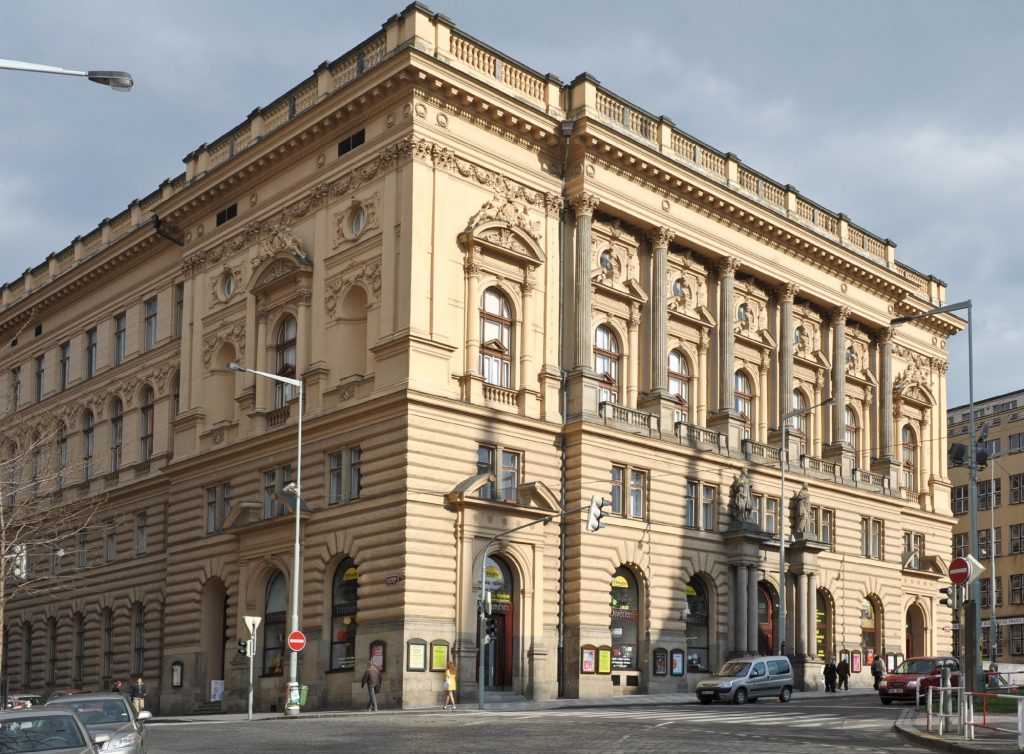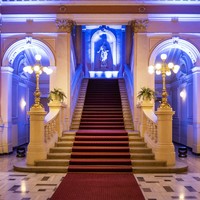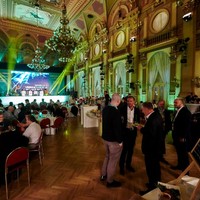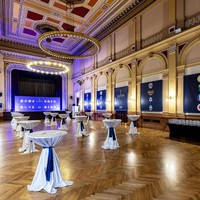Breadcrumbs navigation
National House Vinohrady (Národní dům na Vinohradech)
Due to its location, the Neo-Renaissance National House, built in 1894, is an ideal place for organizing social and cultural events. The biggest advantage of the National House is a prestigious environment of three large halls and five lounges. Mayakovsky Hall is the largest and most beautiful hall with a capacity of up to 700 people.
- Monuments & Architecture
- house
- historicist styles
- Arts & Entertainment
- concert hall
- multifunctional space
Contacts
- National House Vinohrady (Národní dům na Vinohradech)
- náměstí Míru 9
- 120 53 Praha 2 – Vinohrady
- +420221596111
Object history
The village of Royal Vinohrady used to have rich vegetation, vineyards and gardens. At the end of the 19th century, there was still the so called Seydl’s field planted with grains behind the today’s square Náměstí Míru. Only after the Royal Vinohrady became a town in 1879, the building started. Houses in today’s Francouzská, Anglická and Bělehradská Streets started to grow, as well as in the Purkyně Square, today Náměstí Míru. The town hall and school already existed, when the foundations to the Church of St. Ludmila were laid in 1888. The Vinohrady Representatives decided to build the town’s spectacular cultural and social facility in its neighbourhood. The National House at Vinohrady (Národní dům na Vinohradech) was built in the years 1893 - 94 according to a project of a Vinohrady engineer architect Antonín Turek.
An extensive new-Renaissance building represents an important example of the 19th century’s architectural historicism. Above the entrance at the main front, the three-wing building is decorated with sculptures by Antonín Popp, being allegories of Enthusiasm and Nobility of mind. In the central and the greatest auditorium, there are busts by Josef Strachovský and paintings by Adolf Liebscher. This auditorium was named the Majakovskij Auditorium to commemorate the visit of the Soviet poet Vladimir Majakovskij, who recited his verses with enormous success in 1927. Another, smaller auditorium was named the Rais Auditorium. There was a theatre hall and several other premises, the Sokol gym, lounges of some associations, such as the Burgess Association. There was a well-known restaurant, café, summer and winter garden and also a library. Balls were held here, as well as important concerts, political meetings, Pištěk’s operas and operettas, and even the popular Prague Cabaret Red Seven (Červená sedma). In 1913, the first cinema at Vinohrady started its projections here, under the name Minuta. After the war, the National Association for Songs and Dances had its seat in this building, and after 1955, the National house at Vinohrady was acquired by the Czechoslovak Railway Company, which named it the Cultural Centre of the Railmen 4 years later. The Rarity Collectors’ Club also had its seat here for twenty years. After the return of the democratic regime, the house got back its original name the National House at Vinohrady.
Information source: www.nardum.cz






